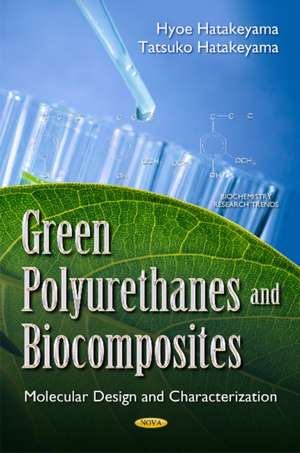Green Polyurethanes & Biocomposites: Molecular Design & Characterization
Autor Hyoe Hatakeyama, Tatsuko Hatakeyamaen Limba Engleză Hardback – dec 2015
Preț: 1493.52 lei
Preț vechi: 1850.82 lei
-19% Nou
Puncte Express: 2240
Preț estimativ în valută:
285.78€ • 298.38$ • 236.52£
285.78€ • 298.38$ • 236.52£
Carte indisponibilă temporar
Doresc să fiu notificat când acest titlu va fi disponibil:
Se trimite...
Preluare comenzi: 021 569.72.76
Specificații
ISBN-13: 9781634835978
ISBN-10: 1634835972
Pagini: 246
Dimensiuni: 180 x 260 x 20 mm
Greutate: 0.57 kg
Editura: Nova Science Publishers Inc
Colecția Nova Science Publishers Inc
ISBN-10: 1634835972
Pagini: 246
Dimensiuni: 180 x 260 x 20 mm
Greutate: 0.57 kg
Editura: Nova Science Publishers Inc
Colecția Nova Science Publishers Inc
Cuprins
Preface; Introduction; Preparation of Polyurethanes and Composites from Plant Polyol; Properties of Advanced Polyurethane Derived from Bioresources; Polyurethane Composites Filled with Plant Residues; Conclusions; Index.
